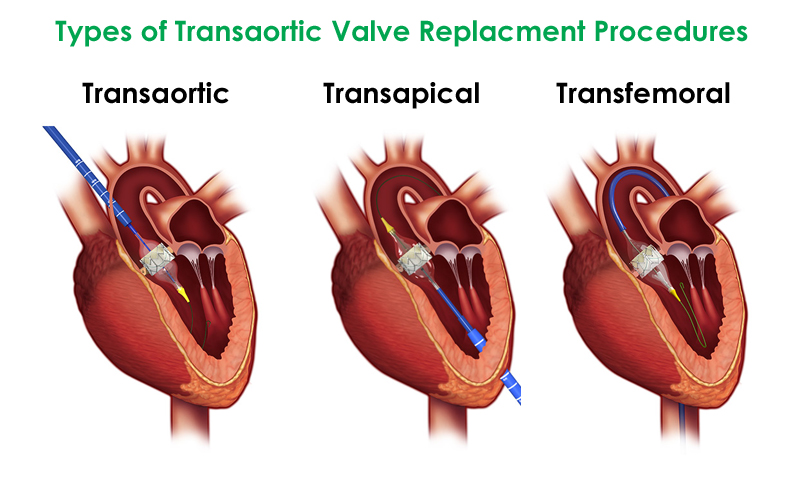Transcatheter Aortic Valve Replacement (TAVR) for Valve Surgery
Transcatheter Aortic Valve Replacement is a cutting-edge procedure for patients found to be too sick or too high risk for traditional open-heart surgery.
The Heart Hospital at St. Joseph's Hospital has a very experienced multi-disciplinary team performing the cutting edge Transcatheter Aortic Valve Replacement. Our board-certified and fellowship trained cardiothoracic surgeons and interventional cardiologists can improve the quality of life for patients with aortic stenosis who cannot tolerate open heart surgery.
The Valve Clinic Heart Hospital was the first facility in southeast Georgia to offer this minimally invasive, state-of-the-art procedure.
The TAVR Team
A group of highly-trained specialists perform the TAVR procedure, including:
- A cardiothoracic surgeon
- Interventional cardiologist
- Surgical nurses
- Cardiac imaging technician
How TAVR works
TAVR is a less invasive approach that allows the team to use a catheter inserted from the patient’s leg or chest to insert a new prosthetic valve while the patient’s heart is still beating. The approach used – transfemoral, transapical or transaortic– depends on your medical history and complex valve condition.
It is indicated for patients with aortic stenosis, or a narrowing of the aortic valve opening that does not allow normal blood flow, who have a history or other medical conditions. Learn more about aortic stenosis here.
During the procedure, the patient receives general anesthesia. Once you are asleep, a small incision is made so that your specialists can insert a sheath (short hollow tube about the width of a pencil). The specialists will
then insert a balloon into the sheath and use a special x-ray to navigate it through your vessel until it reaches your aortic valve. There, the balloon is inflated with fluid so the specialists can break open your narrowed valve. This is called
a balloon aortic valvuloplasty (BAV).
Next, your specialists will use the same sheath and x-ray to push an Edwards SAPIEN transcatheter heart valve through your vessel. Again, fluid is used to expand the new prosthetic valve within
your diseased valve, pushing the leaflets of your diseased valve aside.
As the balloon is deflated, your heart’s normal blood flow will cause the leaflets of your new valve to begin working. The surgical team will make
sure that your new valve is working properly before removing the sheath and closing your incision.
After the procedure, you will be admitted to the Coronary Care Unit at St. Joseph’s Hospital where you can be closely monitored
by a team of experienced nurses. You will remain on this unit until your specialists feel you are ready to be discharged to home. While your length of stay within the hospital will depend on your specific procedure and overall health, most
TAVR patients go home within 2-3 days following their procedure.
While most patients report that they feel better right away, your specialists will give you specific instructions related to medications, diet or activity. It is important
that you follow these guidelines and attend all scheduled check-ups to ensure your complete recovery.
Our TAVR Physicians
Cardiothoracic Surgeon
 | |
| Dr. Jeremy London |
Interventional Cardiologists
 |  |
| Dr. Michael Babcock | Dr. William Wallace |
Accepting Referrals through The Valve Clinic
To learn more about The Valve Clinic at St. Joseph’s/Candler or TAVR, please call 912-819-TAVR.
Contact Us
To learn more about the Valve Clinic or the TAVR procedure, please call 819-TAVR or ask your physician for a referral.

